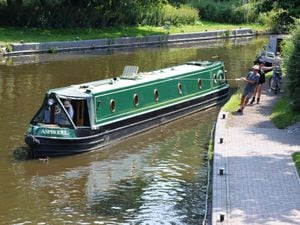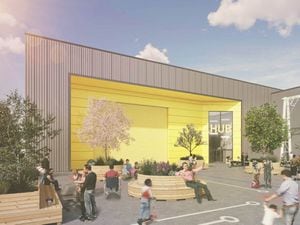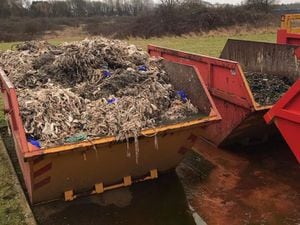Spectacular renaissance in the region's waterways
In 1962, a group of teenagers who spent their weekends rowing their boats along the West Midland canal network found an obstacle blocking their path.

"A huge timber beam had been spiked into the ground at both ends," recalled one of them, the late Vic Smallshire.
Back then, the region's filthy, foul-smelling waterways, covered in duckweed and oil slicks, were a headache the Government could have done without. Reluctantly acquired as a result of rail nationalisation, the little-used waterways were a drain on resources the cash-strapped transport authorities could have done without. Already under pressure to stem the losses in the rail industry caused by the growth of the private car, the Ministry of Transport's policy was as simple as it was clear – the canals would simply be abandoned, and people would be discouraged from using them.
Never afraid to challenge the establishment, 17-year-old Vic wrote to the Inland Waterways Authority, asking what would happen if he simply removed the barrier. The answer was nothing, and what began as a youthful act of rebellion became a lifetime quest to save the region's canals.
Today, the canals of the Black Country, Shropshire, Staffordshire and the Wyre Forest are considered among the most desirable locations in the West Midlands. This renaissance is in no small part due to the actions of Vic – who founded the Dudley Canal Trust – and others like him, whose tireless campaigning saw them transformed from unloved eyesores into some of the region's biggest attractions.
The motorways of the 18th century have gone from dereliction and decline, reinvented as places for leisure and wellbeing. They have also become desirable places to live, with once derelict wastelands becoming trendy locations for urban living. A recent study by Warwick University and The Alan Turing Institute established that canals come out on top as the most highly rated scenic feature in built up urban areas.
And now the Canal & River Trust (C&RT) is launching an academic study with Warwick University to find what it is that makes our waterways so special.
As well as becoming popular visitor attractions and desirable places to live, canals are also thought to be good for our health – and the economy. Far from an obsolete drain on resources, it is estimated that the health benefits relating to canal-based activities saves the NHS about £1 billion a year.
The Canal & River Trust, responsible for more 2,000 miles of man-made waterway in England and Wales, was formed in 2012, and effectively replaced the Inland Waterways Authority which 60 years ago was seeking to close the canals down.
The trust – known as 'Cart' among the boating fraternity – hopes the study will find give it a fresh insight into why the human brain responds so well to these 200-year-old, industrial environments, and how they can benefit our health and wellbeing.
People up and down the country are being asked to participate in its 'Science of Scenic Beauty' study, where they will be asked to rate images of canals and rivers online. The idea is to create hard data defining the key elements, or science behind scenic beauty.
Television GP Dr Amir Khan, known for his appearances on Good Morning Britain and Lorraine, says: “Canals provide vital blue and green outdoor space, particularly in some of the nation’s most built-up and deprived communities.
"Spending time in these precious spaces can provide benefits gained from exercise, more sunlight, cleaner air, and the regenerative power that comes from being close to nature.”
To understand the stunning revival of our canals, one only needs to walk along the The Staffordshire & Worcestershire Canal, which runs from Stourport to Stafford, the Shropshire Union Canal which branches off at Wolverhampton and continues up to Ellesmere, or the Birmingham Canal between the Second City and Wolverhampton, are some of the region's favourite spots for walkers. A bit of Hollywood stardust was even added to the mix when movie star Harrison Ford and his future wife Calista Flockhart decided to spend their holiday on a canalboat in Shropshire.
C&RT chief executive Richard Parry says canals have been a lifeline for many during the pandemic. “Throughout the pandemic, canals have been an on-the-doorstep lifeline for millions, including many of the one in eight residents in the UK who do not have a garden.
"Government methodologies show that the trust’s canals provide around £1 billion in savings to the NHS each year through physical health and wellbeing benefits associated with active visits.
"That is why we are asking people to join the Science of Scenic Beauty study, so we can better understand what makes canals so impactful on people’s health and wellbeing.
"Take part in the study and help make more miles of canal blue, green and better - because life is better by water."
*To take part in the survey, see the website canalrivertrust.org.uk/





